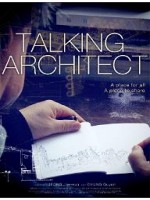130, Suyeonggangbyeon-daero,
Haeundae-gu, Busan, Republic of Korea,
48058
DATABASE
Talking Architect (2012)
< Mal-ha-neun Geon-chuk-ga >
Talking Architect is the first theatrical documentary about Korea's contemporary architecture and architects. The protagonist, architect CHUNG Gu-yon (1943-2011), is a representative architect belonging to the 2nd generation of Korea's contemporary architects. Unlike most 2nd generation architects who think of architecture as a fetish, he knows the limitations of architecture and doesn't worship it. He showed by example for whom an architect should work, and what kind of tool...more
| Genre | Documentary | Production Status | Released |
|---|---|---|---|
| Running Time | 93min | Release Date | Mar 08, 2012 |
| Country | South Korea | Rating | |
| Language | Korean | Co-Production | N |
| Original |
-
Number of Screens : 21
-
Total Admissions : 39,894
-
Total Gross : $215,620
As of Jan 01, 2026
-
M-Line Distribution | sales@mline-distribution.com
- Republication, copying or redistribution by any means is prohibited without the prior permission of KOFIC and the original news source.














